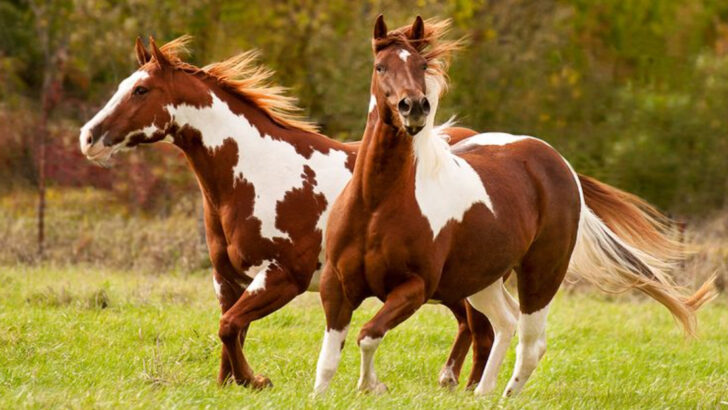Horses have been mesmerizing us for centuries, their grace and power etched into the very fabric of history. From the wild plains to our backyards, these majestic creatures have earned their place as companions, workers, and symbols of freedom.
But there’s so much more to horses than their beautiful appearance. Beneath their glossy coats lies a world of astonishing abilities and behaviors that continue to amaze. These gentle giants have secrets—ones that make them more than just animals, but true wonders of nature.
Ready to uncover some jaw-dropping facts? In this post, we’re diving deep into 24 fascinating truths about horses that will leave you in awe. From their remarkable strength to their surprising intelligence, get ready to see these incredible animals in a whole new light.
Horses’ Eyesight
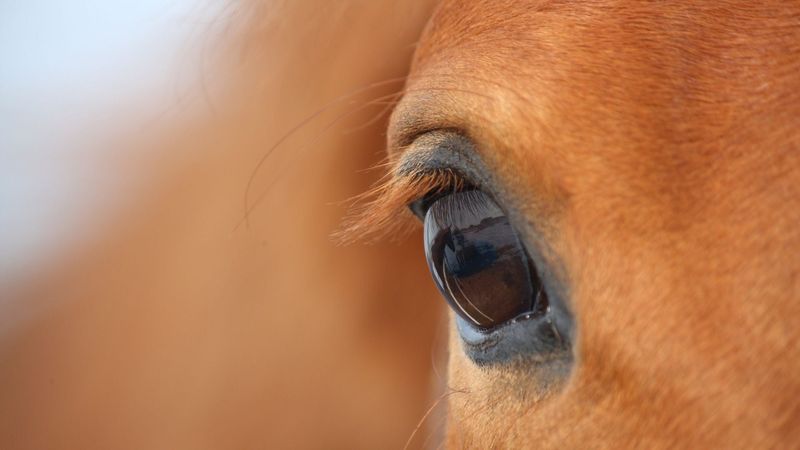
Horses have some of the largest eyes of any land mammal, which allows them a broad field of vision. Their eyes are positioned on the sides of their heads, providing a nearly 360-degree view.
This wide field of vision helps horses detect predators from various angles, crucial for their survival in the wild. However, they have two blind spots: directly in front of their nose and directly behind them.
To see objects clearly, horses need to turn their heads. Despite common belief, horses have excellent night vision, aiding them in low-light conditions.
Unique Hoof Structure
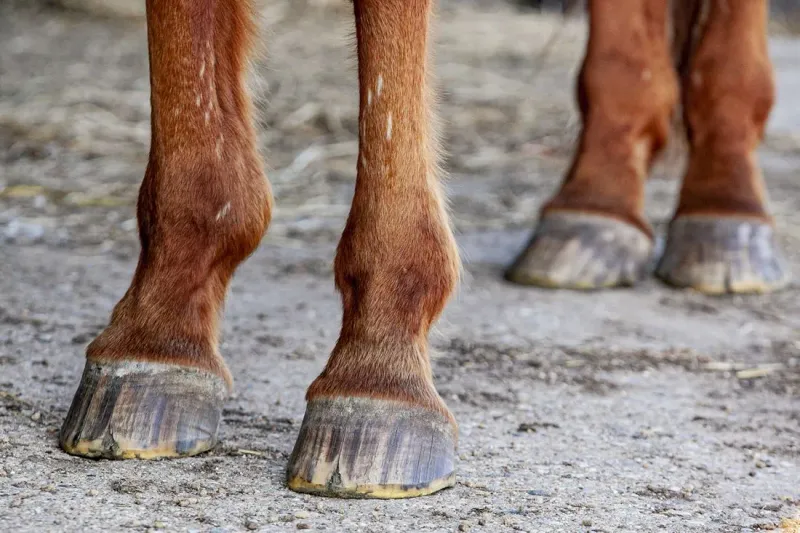
A horse’s hoof is a complex structure that acts as a shock absorber for its powerful body. The hoof is made up of several parts, including the wall, sole, frog, and digital cushion, each playing a crucial role in the horse’s mobility and balance.
Unlike humans, horses walk on their toes. Proper hoof care is essential to prevent lameness and ensure the horse remains healthy and active.
Regular trimming and checking for injuries or infections are vital to maintaining hoof health. Well-maintained hooves are a sign of a well-cared-for horse.
Communication Through Ears
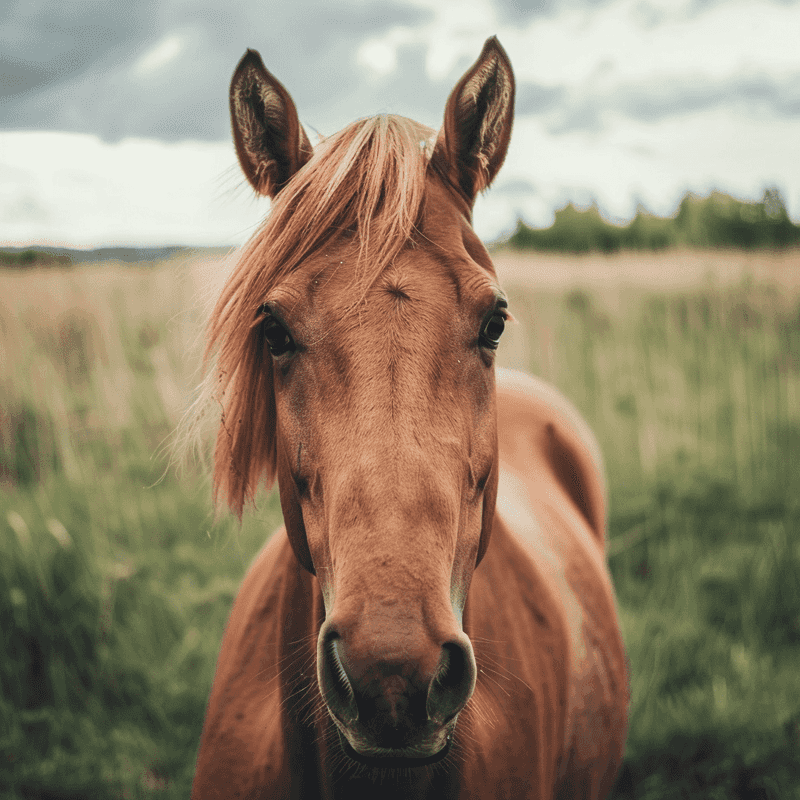
Horses communicate a plethora of emotions and intentions through their ear movements. By observing a horse’s ears, one can gauge its mood and attentiveness. Ears pricked forward indicate curiosity or interest, while flattened ears suggest anger or discomfort.
Horses swivel their ears independently to pick up sounds from different directions. The ability to rotate their ears nearly 180 degrees helps them localize sounds effectively, which is vital in alerting them to potential threats.
Equine trainers often rely on ear signals to understand a horse’s mental state during training sessions.
Powerful Gallop
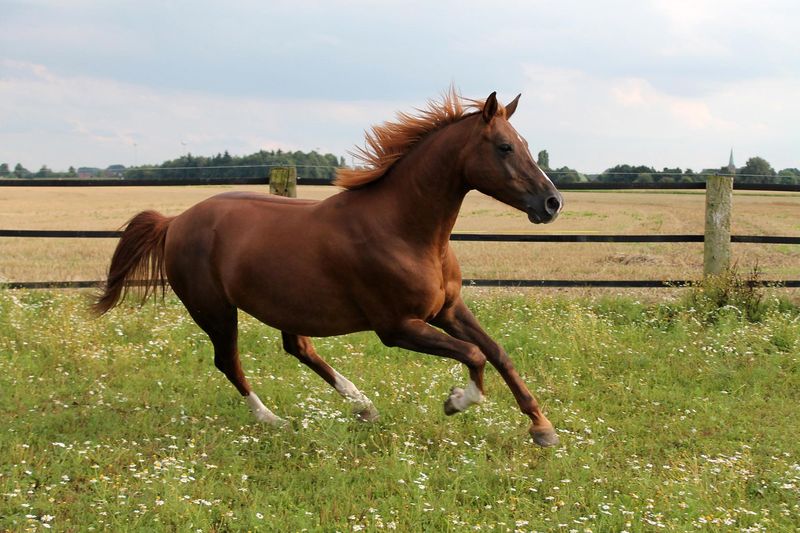
The gallop is the fastest gait of a horse, capable of reaching speeds up to 55 mph. This powerful gait showcases the horse’s strength and agility, allowing it to cover vast distances quickly.
During a gallop, all four of the horse’s feet are off the ground simultaneously at certain points, a phenomenon known as a “suspension phase.”
This energy-efficient gait is not only used for speed but also for escaping predators in the wild. The gallop is a testament to the horse’s evolutionary design, optimized for both speed and endurance.
Horses’ Memory
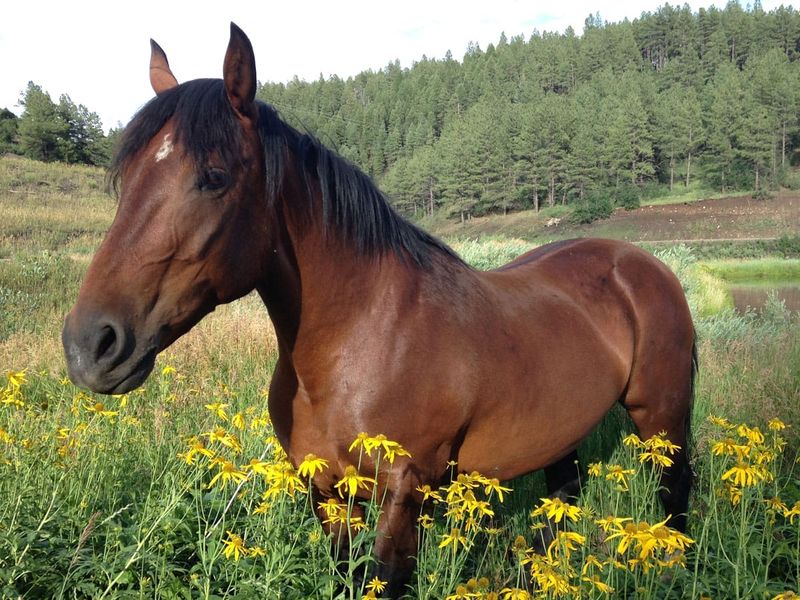
Horses possess an impressive long-term memory, which enables them to remember people, places, and experiences. This memory is crucial for their survival, helping them avoid previously encountered dangers and recognize familiar individuals.
Studies have shown that horses can recall human handlers and differentiate between friendly and hostile interactions. Their memory also aids in training, as they can remember specific commands and routines over time.
Building a positive relationship with a horse involves consistent and respectful interactions, as negative experiences can lead to fear and distrust.
The Art of Grooming
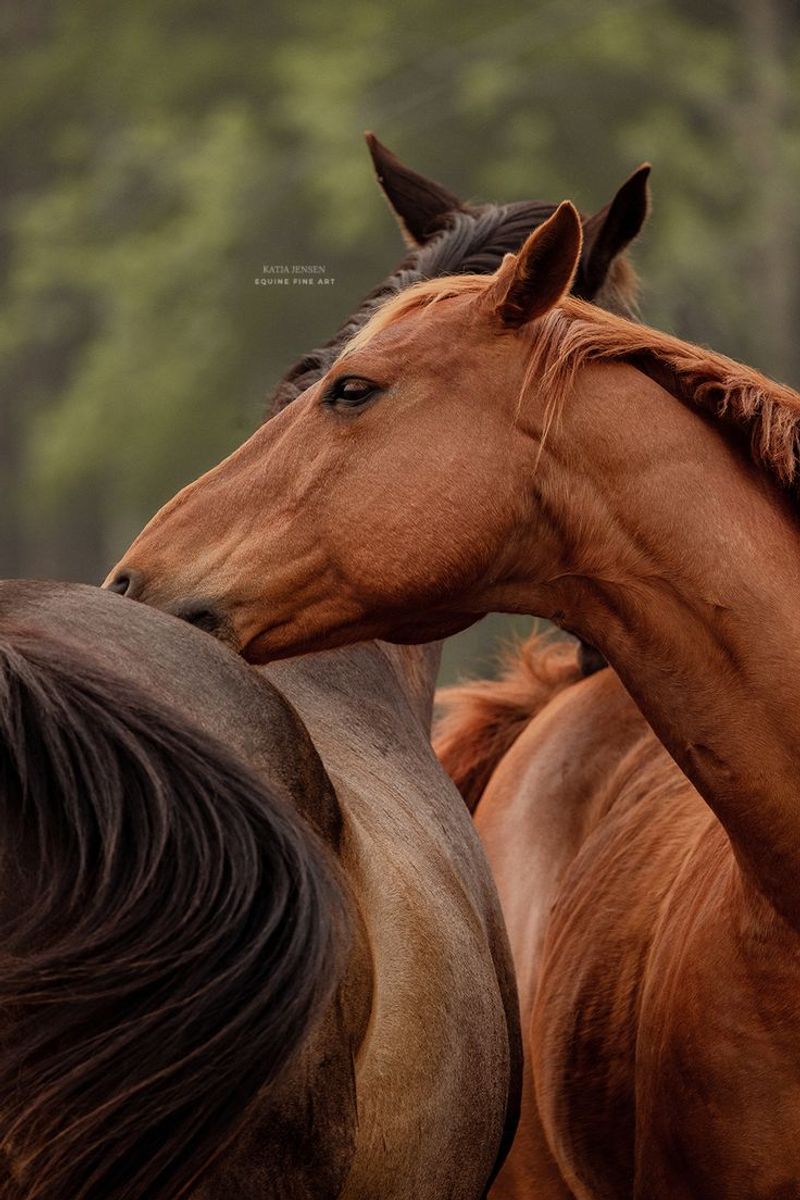
Grooming is an important social activity among horses, strengthening bonds and ensuring overall well-being. Horses often engage in mutual grooming, where they nibble and lick each other’s coats, removing dirt and parasites.
This behavior not only helps maintain cleanliness but also provides comfort and reduces stress. Grooming sessions reinforce social hierarchies within the herd, as horses often groom those they have close relationships with.
Beyond social interaction, grooming is essential for maintaining a horse’s health, promoting circulation, and allowing for the inspection of injuries or abnormalities.
Diverse Breeds
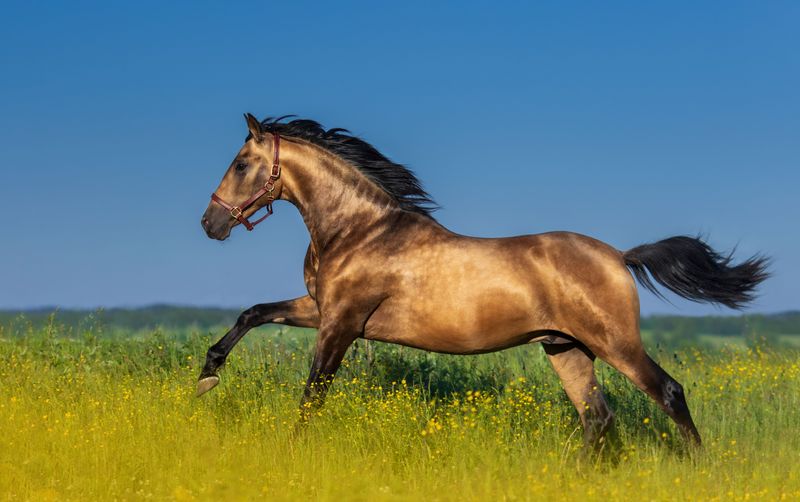
There are over 300 breeds of horses worldwide, each with unique characteristics and abilities. From the small and sturdy Shetland Pony to the elegant and swift Thoroughbred, these breeds have been developed to meet specific needs.
Breeds are categorized into three main types: hot-blooded, known for speed and endurance; cold-blooded, known for strength and calmness; and warm-blooded, which are versatile for sport and work.
Each breed has distinct traits, such as coat color, size, and temperament, contributing to their suitability for different tasks, from racing to farming.
Horses’ Digestive System
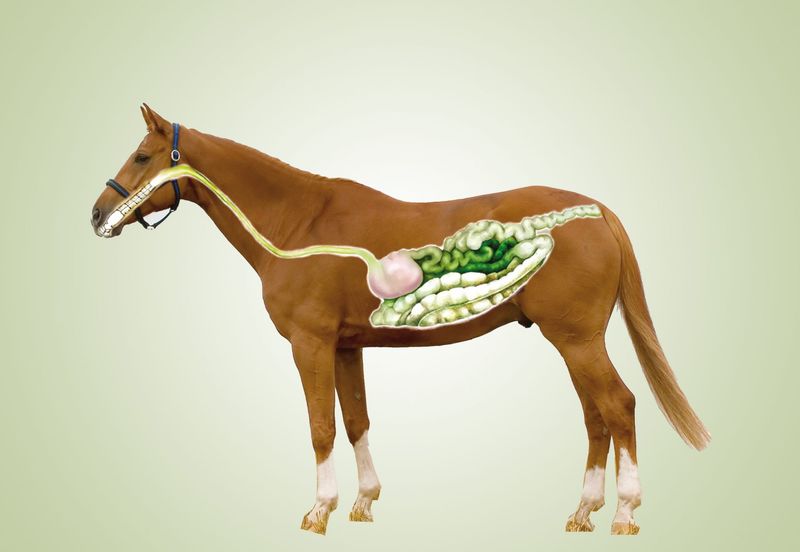
The horse’s digestive system is uniquely adapted to process fibrous plant materials, allowing them to thrive on a diet primarily of grasses. Horses are monogastric animals with a single-chambered stomach, unlike ruminants like cows.
They rely on a hindgut fermentation process, primarily in the cecum, to break down cellulose. This digestive efficiency supports their grazing habits, where they consume small amounts of food over extended periods.
Proper dietary management is critical for preventing colic, a common and potentially life-threatening condition in horses. Ensuring access to clean water and quality forage is essential for their health.
Instinctive Flight Response
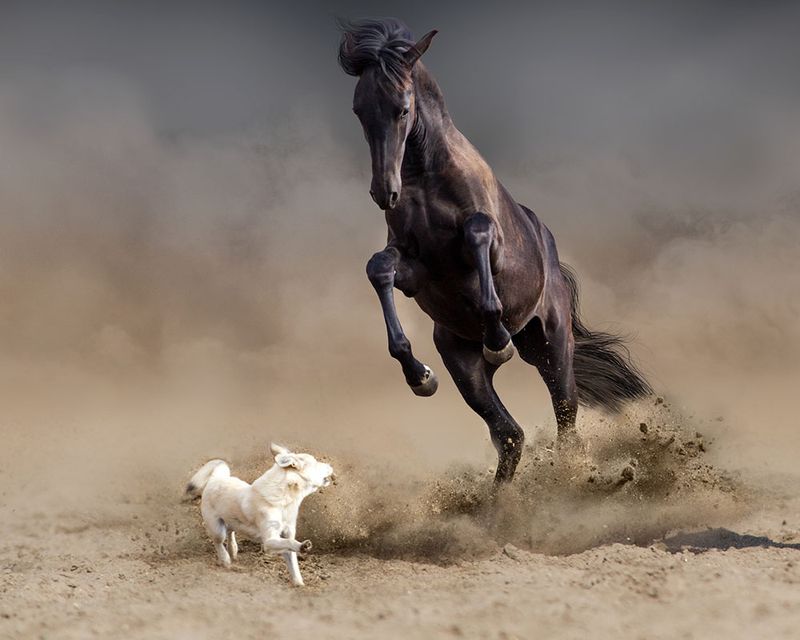
Horses are prey animals with a natural instinct for flight when threatened. This survival mechanism has been honed over millennia, enabling them to escape predators swiftly.
The flight response is triggered by sudden movements, loud noises, or unfamiliar objects, causing adrenaline to surge through their bodies. While this instinct protects them in the wild, it can pose challenges in human interactions.
Understanding and respecting this response is crucial for safe horse handling. Building trust through gradual exposure and positive reinforcement helps horses feel secure, reducing instances of fear-driven reactions.
Horses’ Social Structure
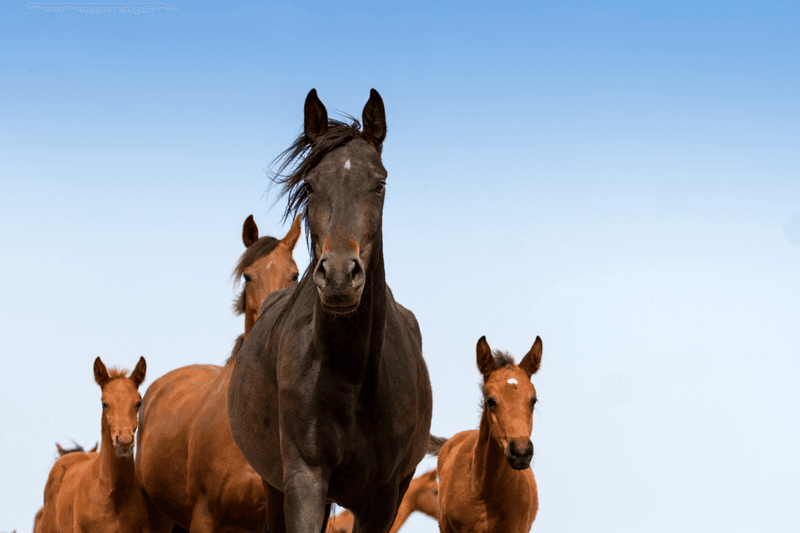
Horses are social creatures that thrive in herds, where they establish complex social structures. Within a herd, horses form strong bonds and rely on each other for protection and companionship.
A dominant mare typically leads the group, guiding them to food and water sources while maintaining order. The social hierarchy is established through subtle cues and behaviors, such as grooming, vocalizations, and body language.
Understanding these social dynamics is essential for horse owners and handlers to foster a harmonious environment. Horses separated from their herd companions can experience stress and anxiety, highlighting the importance of social interaction.
Horse Whispering
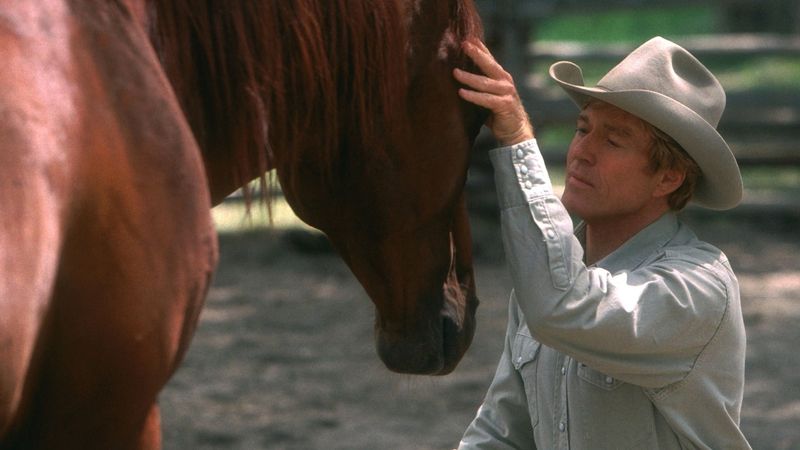
Horse whispering is a method of training that emphasizes trust and communication between humans and horses. This approach focuses on understanding equine psychology and body language to foster cooperation without force or intimidation.
Trainers use gentle techniques to establish a bond, encouraging horses to respond willingly to commands. The practice gained popularity in the late 20th century, thanks in part to influential trainers like Monty Roberts.
Horse whispering underscores the importance of empathy and patience, transforming traditional training methods into more humane and effective practices. This technique enhances the bond between horse and handler, resulting in a more responsive and content animal.
Horses’ Unique Gaits
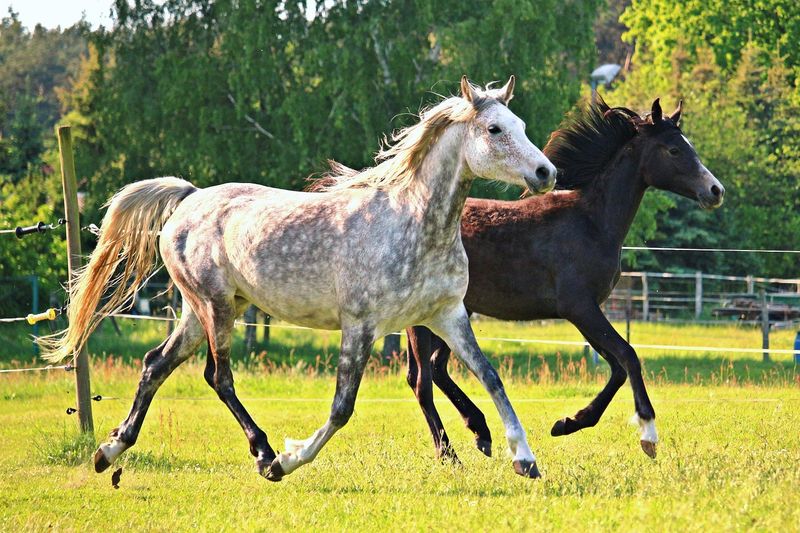
Horses possess a variety of gaits, each with distinct rhythms and speeds. The most common gaits are the walk, trot, canter, and gallop. Each gait provides different levels of speed and comfort for both horse and rider.
Some breeds, like the Tennessee Walking Horse, have unique gaits such as the running walk, which is known for its smooth, gliding motion.
Understanding and mastering these gaits is essential for riders, enhancing their ability to work in harmony with the horse. Different gaits serve various purposes, from leisurely rides to high-speed races.
The Role of Horses in History

Horses have played a pivotal role in human history, shaping civilizations through their use in transportation, agriculture, and warfare. From the battlefields of ancient Rome to the Mongol conquests, horses have been central to military strategies.
Their speed and strength allowed for rapid movement and the transportation of goods, revolutionizing trade and communication. Beyond warfare, horses were vital in agriculture, helping plow fields and transport crops.
The domestication of horses transformed societies, enabling the expansion of territories and the development of trade networks, leaving an indelible mark on human progress.
Horses’ Lifespan
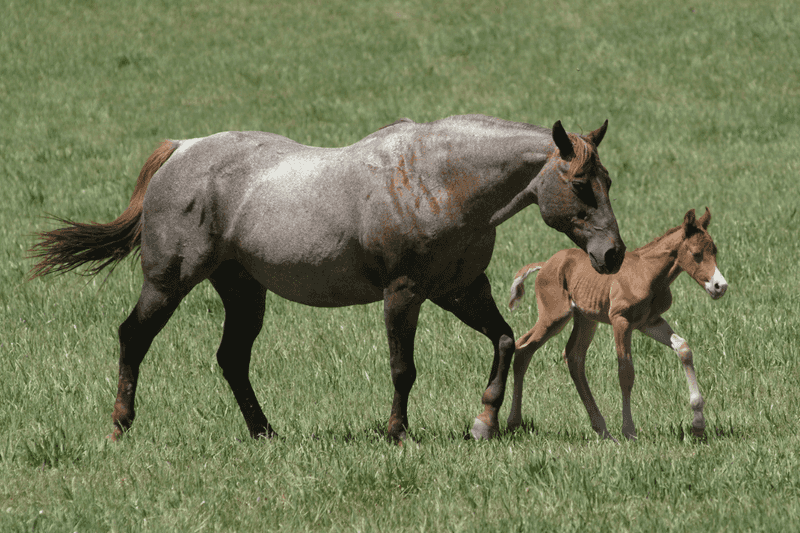
Horses typically live between 25 to 30 years, with some reaching even older ages under ideal conditions. Factors influencing a horse’s lifespan include genetics, diet, healthcare, and living environment.
Older horses may require specialized care, such as dental attention and dietary adjustments, to maintain their health and well-being. Advances in veterinary medicine have contributed to longer lifespans, enabling horses to enjoy active lives well into their senior years.
Owners play a crucial role in ensuring their horses age gracefully, providing love, attention, and appropriate medical care to enhance their quality of life.
Horses in Mythology
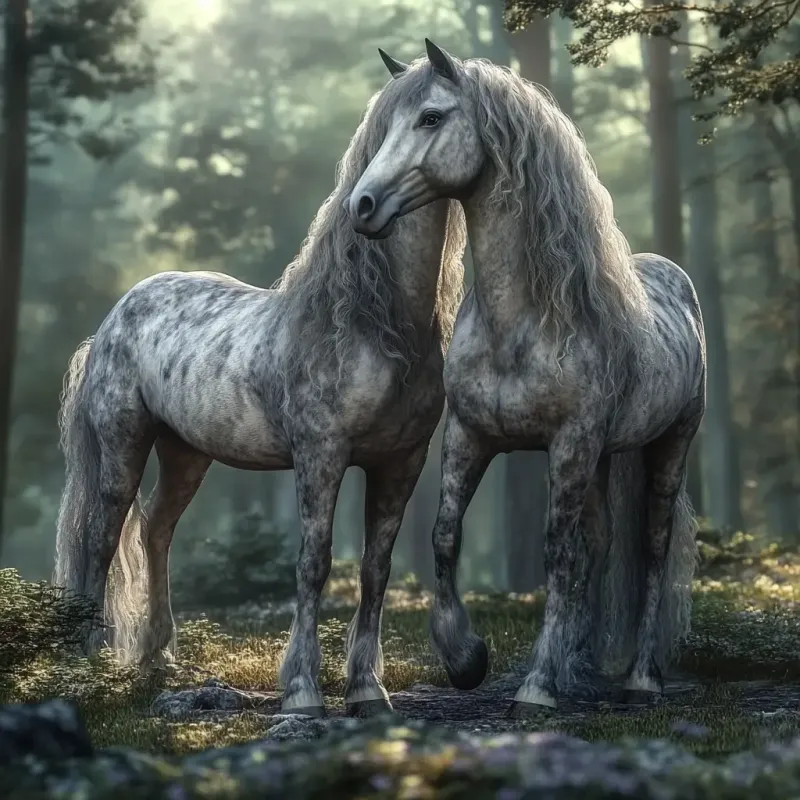
Throughout history, horses have been featured prominently in myths and legends across cultures. In Greek mythology, Pegasus, the winged horse, symbolizes inspiration and freedom.
The Norse god Odin rode an eight-legged horse named Sleipnir, known for its speed and strength. In Celtic folklore, the kelpie, a shape-shifting water spirit, often took the form of a horse.
These mythical creatures reflect the awe and reverence humans have for horses, attributing them with magical qualities. The enduring presence of horses in mythology highlights their significance and the deep connections formed between humans and these majestic animals.
Horses’ Sense of Smell
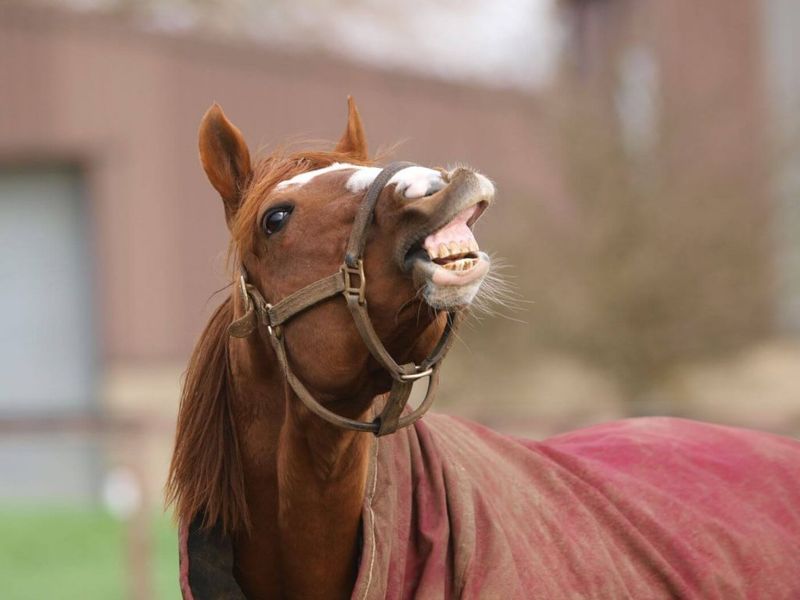
Horses have a highly developed sense of smell, which they use to explore their environment and communicate with other horses. Their acute olfactory abilities help them detect predators, identify familiar individuals, and locate food sources.
Smell also plays a role in social interactions, as horses often greet each other by sniffing. The vomeronasal organ, located in the nasal cavity, aids in processing pheromones, crucial for reproductive behaviors.
Understanding a horse’s reliance on scent can enhance handling and training, as introducing new scents can help acclimate them to unfamiliar situations.
Therapeutic Benefits of Horses
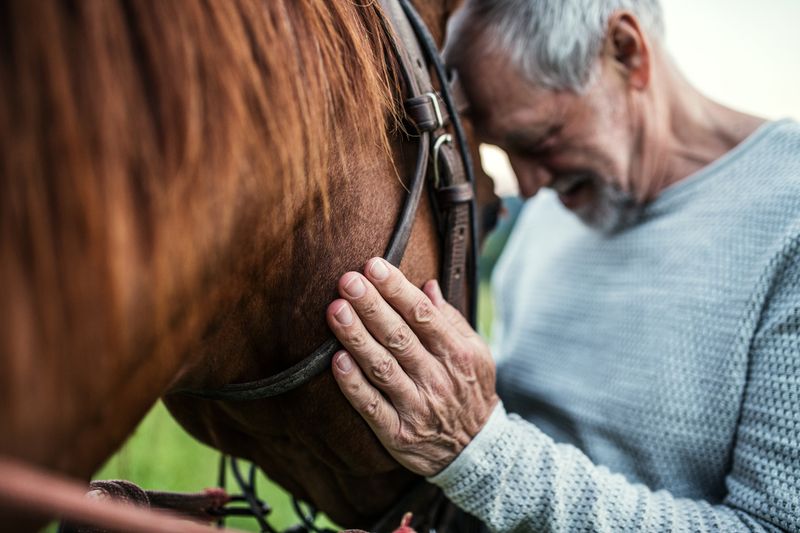
Horses have long been recognized for their therapeutic benefits, particularly in equine-assisted therapy programs. These programs utilize the calming presence of horses to aid individuals with physical, emotional, and cognitive challenges.
Engaging with horses can improve balance, coordination, and confidence, providing a unique form of rehabilitation. The non-judgmental nature of horses fosters emotional healing, encouraging trust and communication.
Equine therapy is widely used for individuals with autism, anxiety, and PTSD, offering a holistic approach to healing. The bond formed between participants and horses underscores the profound impact these animals have on human well-being.
Colors and Markings
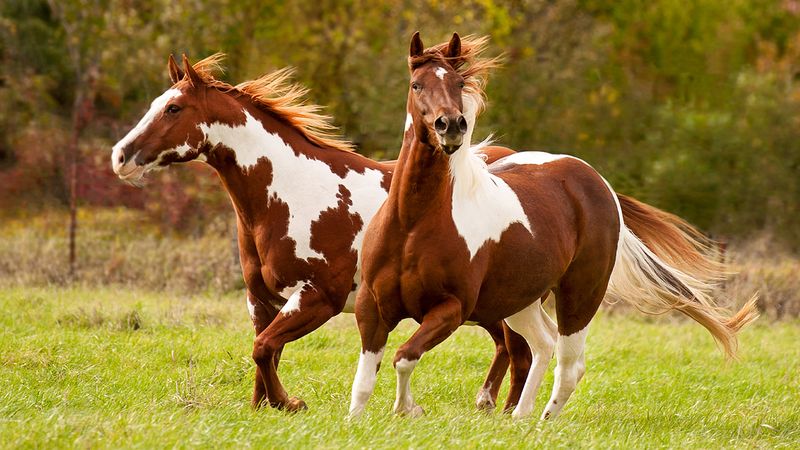
Horses come in a diverse array of colors and markings, each with its own genetic background. Common coat colors include bay, chestnut, black, and gray, while markings such as blazes and socks add unique touches to individual horses.
These variations are determined by specific genes that control pigmentation. Horse enthusiasts often find beauty in these differences, with certain colors and patterns being highly prized in breeding programs.
Identifying a horse’s color and markings is important for registration and pedigree documentation. The diverse range of appearances adds to the allure of these majestic creatures, showcasing nature’s artistry.
Adaptive Learning
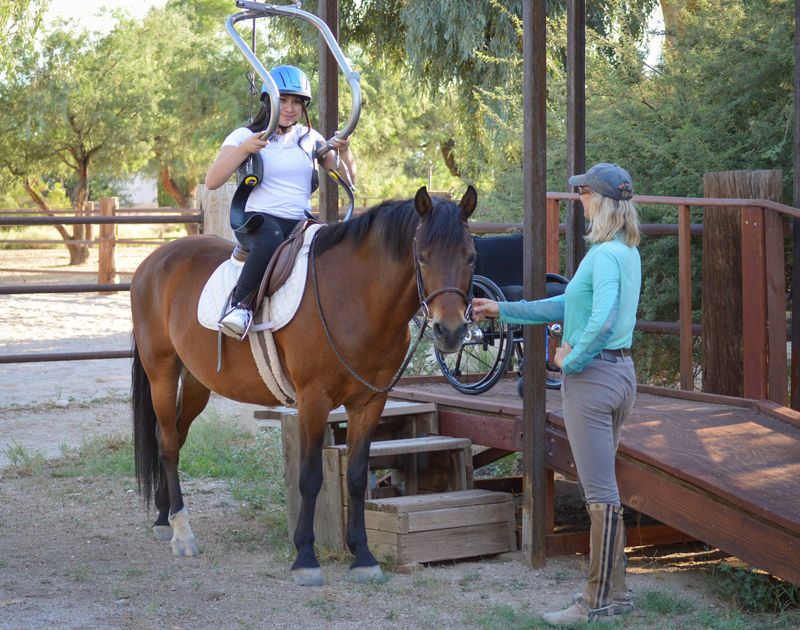
Horses are intelligent animals capable of adaptive learning, allowing them to solve problems and understand cues in their environment. They learn through observation and experience, adapting their behavior to achieve desired outcomes.
Positive reinforcement training techniques leverage this intelligence, rewarding horses for correct responses to commands. This approach fosters a cooperative learning environment, encouraging horses to engage in training willingly.
Owners and trainers often use puzzles and challenges to stimulate a horse’s mind, promoting cognitive development. The ability to learn and adapt makes horses versatile partners in various disciplines, from dressage to trail riding.
Horses’ Role in Agriculture
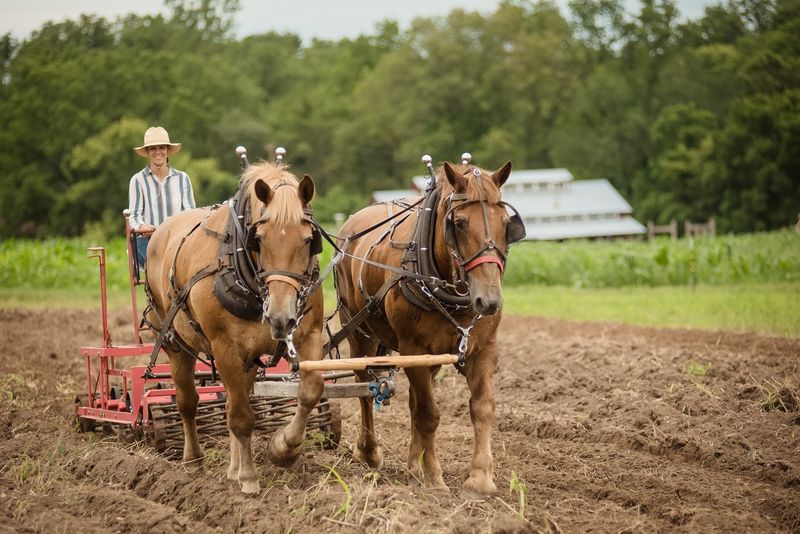
Before the industrial revolution, horses were indispensable in agriculture, providing the muscle power needed to plow fields and transport produce.
Their strength and endurance made them ideal for labor-intensive tasks, such as hauling heavy loads and clearing land. Even today, horses are used in sustainable farming practices, offering an eco-friendly alternative to machinery.
The bond between farmer and horse is built on mutual respect and cooperation, reflecting a partnership that has sustained communities for centuries. The use of horses in agriculture represents a connection to traditional land stewardship practices, preserving a way of life rooted in harmony with nature.
Horses’ Hearing Abilities
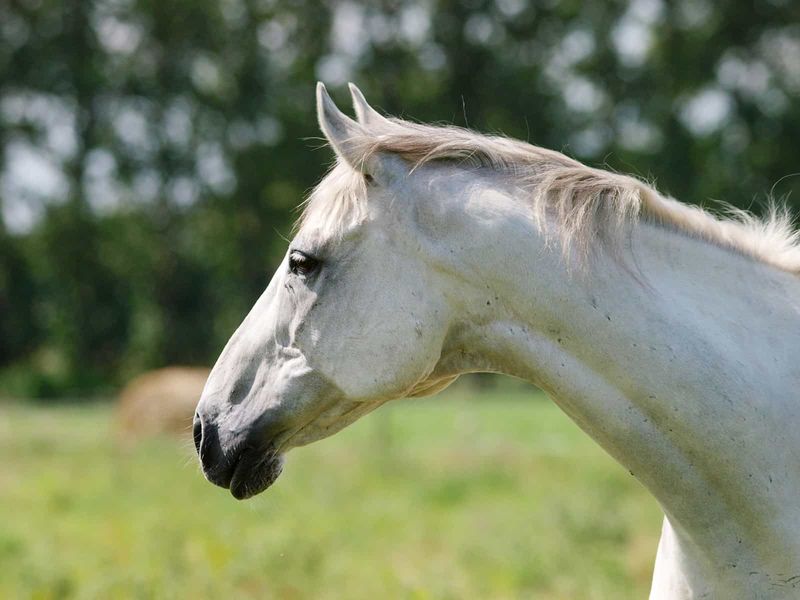
Horses have a keen sense of hearing, detecting sounds beyond the range of human capabilities. Their large, movable ears help capture and amplify sounds, allowing them to detect subtle noises in their environment.
This acute hearing is essential for identifying potential threats and communicating with herd members. High-frequency sounds, such as whinnies and neighs, are easily picked up by horses, aiding in social interactions.
Understanding a horse’s auditory sensitivity is important for trainers and handlers, as loud or unexpected noises can cause stress. Creating a calm and quiet environment helps horses feel secure and comfortable.
Foal Development
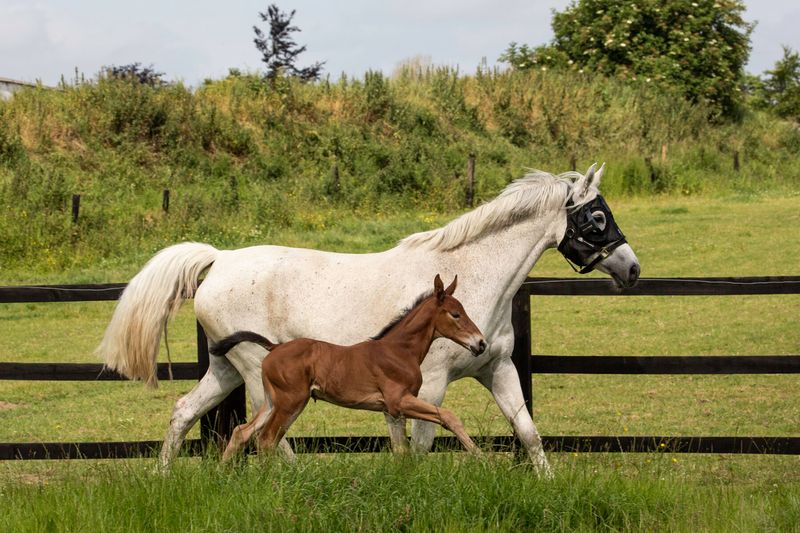
Foals, or young horses, exhibit rapid development in their early months, quickly adapting to their surroundings. Within hours of birth, foals can stand and nurse, a testament to their instinctual drive for survival.
They grow rapidly, gaining strength and coordination as they explore their environment. Social interactions with other horses are crucial for their development, teaching them essential skills and behaviors.
Early handling by humans helps foals become accustomed to human presence, laying the foundation for future training. Proper nutrition and healthcare are vital in supporting a foal’s growth, ensuring they mature into healthy, well-adjusted adults.
Horses in Art and Culture
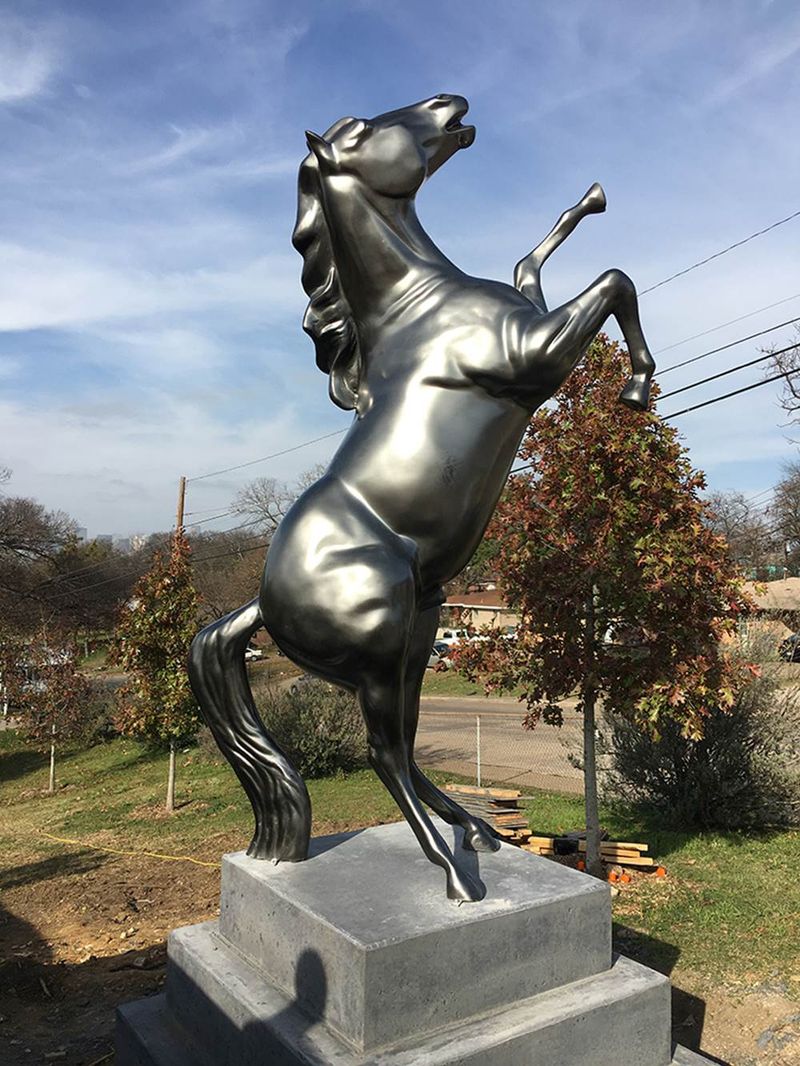
Horses have been celebrated in art and culture for centuries, symbolizing power, beauty, and freedom. From ancient cave paintings to modern sculptures, these majestic animals have inspired countless artists.
In literature, horses often embody nobility and courage, serving as loyal companions to heroes. Their presence in folklore and mythology underscores their significance across cultures.
Contemporary art continues to explore the relationship between humans and horses, reflecting the enduring bond shared with these animals. The depiction of horses in various art forms highlights their grace and majesty, preserving their legacy as symbols of strength and elegance.
Horses’ Adaptation to Climate
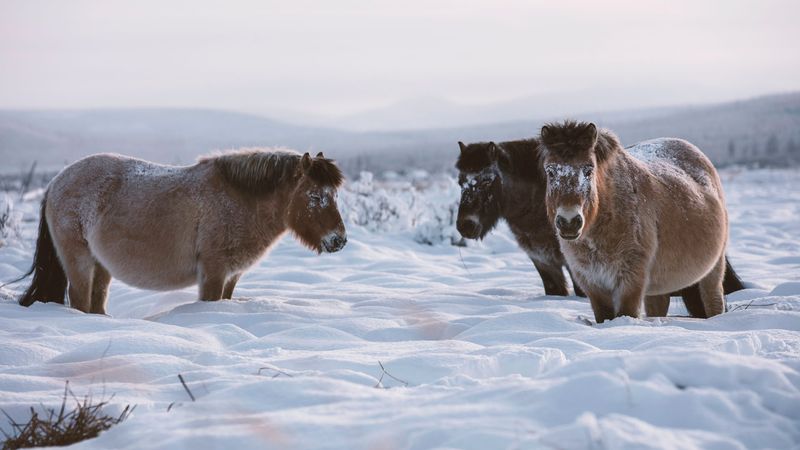
Horses are remarkably adaptable to various climates, thanks to their evolutionary traits and behavioral adaptations. In colder regions, horses grow thick winter coats that provide insulation against harsh temperatures.
Their ability to regulate body temperature allows them to thrive in diverse environments, from arid deserts to lush pastures. Behavioral adaptations, such as seeking shelter or huddling together for warmth, further aid in their survival.
Understanding these adaptations helps owners provide appropriate care, ensuring horses remain healthy and comfortable year-round. This adaptability is a testament to the resilience and versatility of these iconic animals.

